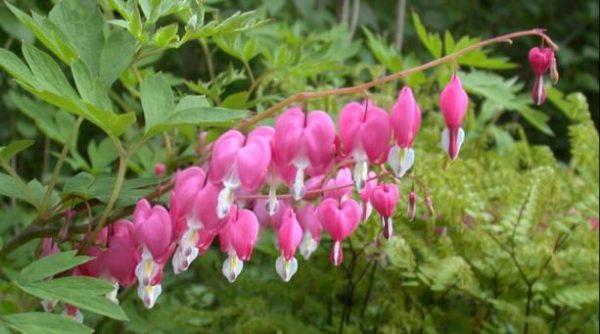A beloved spring favorite of mine is the Bleeding Heart (Dicentra spectabilis). Its lacy, blue-green foliage provides a wonderful contrast to the weeping habit of heart-shaped flowers in red, white, pink, or a combination thereof depending on variety. While a native of Japan, they were brought to America in the mid 1800’s.

Bleeding Hearts can be grown in zones 3-9, making them a great choice for our sometimes fickle climate. They thrive best in well-drained soil with light shade. A time-release, bloom-booster fertilizer worked into the soil around the plant will encourage long-lasting flowering. Mulching is always recommended in our warm, southern climate in order to retain the vital moisture that bleeding hearts need. Too much mulch can promote rot so be judicious in application.
Be sure to mark where you have planted your Bleeding Hearts. Ask me how I know?! These perennials are considered “ephemeral” because their foliage turns brown and disappears back into the ground during the heat of mid to late summer. When I first started planting them, I thought they had died and did not bother to mark where they were planted. Imagine my surprise the following spring when the new foliage popped out of the ground! Tucking these deer-resistant plants among summer-blooming perennials or annuals helps hide the dying vegetation.
There are ever-more types of Bleeding Hearts being developed. “Luxurient”, a fern-leaf variety, is more sun and heat tolerant and may retain the foliage through the summer. Golden Bleeding Hearts add a splash of color to your spring garden. Dutchman’s Breeches are a native variety of Bleeding Heart found in many of our local forests. If you are fortunate enough to time a spring hike at Crabtree Falls in Nelson County, VA, you will experience the sight of these delicate white flowering plants scattered in amongst red and white trilliums.
So, while tucked up under a warm blanket this February dreaming of seeds, annuals, and perennials, make a note to find just the right spot in the garden for this “Heart-y” plant. You won’t regret it!
Author: Sue Becker, Bedford Extension Master Gardener and BAMGA President
